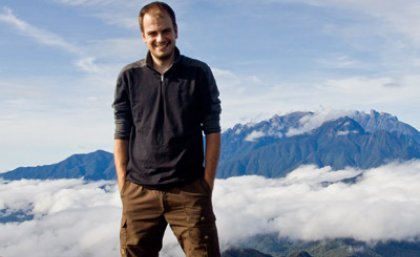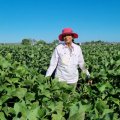
Mount Kinabalu is well known to climbers and adventurers all over the world – now a University of Queensland researcher is putting the Borneo mountain region on the map for trees that contain some of the world's highest concentrations of nickel.
With temperatures ranging from 5 – 35 Celsius, the World Heritage Site has a hugely diverse ecosystem and is home to more than 5,000 plant species in just 1,200 km2. In comparison there are 25,000 plant species in all of Australia (7.7 million km2).
Antony van der Ent, from the Centre for Mined Land Rehabilitation (CMLR) at UQ's Sustainable Minerals Institute said researchers had identified dozens of new plant species including strong nickel hyperaccumulators (trees that contain high concentrations of nickel) in the Park.
“From magnets to mobile phones and car motors, the world's population uses a huge amount of nickel and the availability of mineable deposits, and the costs and complexity of recovery, are potentially limiting future supplies,” Mr van der Ent said
“These trees contain up to three per cent nickel so there is the real potential to develop large nickel ‘farms' in the Tropics, which would be of benefit to the environment and local communities who have previously dealt with the impacts of mining.”
CMLR Director Professor David Mulligan said studying intact landscapes such as Kinabalu Park, researchers were gaining insights into plant development and growth.
"We are also gaining an understanding of the relationships between the biotic and abiotic environments – knowledge that is enormously useful for informing strategies relating to mine site rehabilitation," Professor Mulligan said.
Mr van der Ent has written about Kinabalu Park's natural history and the rich ecology of Mount Kinabalu in a new book, Kinabalu.
“The Park is extremely biodiverse. Only a few hectares of forest contain literally hundreds of co-existing plant species, which creates huge opportunities for researchers to study and learn from this untouched landscape,” he said.
The book details the region's biodiversity and broader scientific value.
“Sadly, a lot of people visit the site and climb the mountain but they have little idea of the importance of the environment surrounding them," he said.
"I hope this book encourages people to take in their surrounds and realise how special it is.”
Kinabalu will be officially launched by the Malaysian State of Sabah's Minister for Tourism, Culture and Environment YB Datuk Masidi Manjun on 7 November 2013 in Kota Kinabalu.
It can be purchased through the publisher Natural History Publications (Borneo).
Media: Centre for Mined Land Rehabilitation's Antony van der Ent, a.vanderent@uq.edu.au or UQ Sustainable Minerals Institute Communications Manager Anna Bednarek, +61 7 3346 4233, a.moloney@uq.edu.au
Notes to the Editor
SUSTAINABLE MINERALS INSTITUTE
The Sustainable Minerals Institute is made up of seven research centres whose disciplinary roots lie in people, environment and production. Established in 2001, the Institute's research covers all facets of mining from exploration to site rehabilitation. The Institute has approximately 350 staff including 100 postgraduate students. For more information go to www.smi.uq.edu.au
CENTRE FOR MINED LAND REHABILITATION
Established in 1993, the Centre for Mined Land Rehabilitation addresses the minerals industry's environmental challenges with quality science and translates research outcomes into practices that lead to continual improvement of rehabilitation and the protection of environmental values. For more information go to www.cmlr.uq.edu.au
.jpg)









